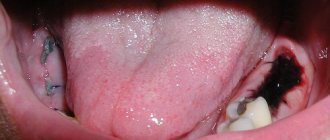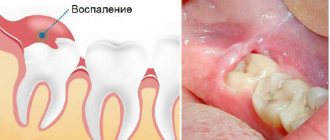What is leg swelling
Swelling of the legs is an external manifestation of the accumulation of fluid in the body. At the same time, the limb itself noticeably increases in size, the skin on it becomes loose, and when pressed, dents appear that do not disappear instantly.
Swelling usually occurs in the evening, although it can still cause discomfort the next morning. It is localized:
- in the feet;
- in the ankles;
- in the legs;
- from socks to knee.
Depending on the reasons, either one leg or both may swell. Symmetrical distribution often indicates generalized edema, which may be a symptom of a life-threatening condition.
If this trouble appears rarely, then you can fight it with folk remedies. The regularity of occurrence indicates a disease of the internal organs. Therefore, it is important to establish the nature of the swelling.
Causes of leg swelling
When there is too much fluid in the tissues, it means that there is a malfunction in the functioning of the body. Most often, swelling is caused by:
- protein metabolism disorder;
- damage to cell membranes, increasing their permeability;
- changes in pressure differences in tissues and vessels;
- impaired blood circulation.
There are many reasons for such failures. Some are temporary (allergic reaction, bruise, infection). Others indicate the development of pathologies of the lower extremities (varicose veins, thrombophlebitis). Still others indicate serious diseases of the internal organs (heart, kidneys, lymphatic system).
A person cannot independently determine why his foot is swollen: because of uncomfortable shoes or because of a blocked blood vessel. Therefore, you should not postpone a visit to the doctor for subsequent treatment.
How quickly does swelling go away and how many days does it last?
The appearance of a tumor is possible within a few hours after surgery. First it appears on the gum, after a day it spreads to the cheek and face. Usually lasts for several days without further growth. Healing of damaged tissue takes an average of a week. During this period, swelling persists.
The peak state , that is, the greatest development of inflammation, should be expected on the third postoperative day. Even a doctor cannot know how long the swelling will last. The specialist will give recommendations regarding the elimination of pain, the implementation of which will significantly facilitate the healing process.
If after 10 days your health does not improve, you should consult a doctor, as there is a risk of inflammation due to infection.
Why does one leg swell?
If the swelling is asymmetrical, its cause is localized directly in the affected limb. Swelling may occur due to bruises on the legs or more serious injuries:
- ankle joint injuries;
- meniscus tear;
- separation of the calf muscle;
- bone fracture;
- tissue compression.
Venous edema is also most often unilateral. Varicose veins cause fluid stagnation, but they are localized in one limb where the vessels are affected. This is indicated by the characteristic venous network.
Thrombophlebitis disrupts blood circulation, and at the same time the outflow of fluid from tissues. In this case, swelling is accompanied by other unpleasant symptoms: fever, pain, compaction in the blockage area.
Complications that can occur along with swelling
When implanting an implant, the development of temporary complications that appear after surgery and are combined with swelling is considered the norm.
Early complications that do not pose a danger include:
- minor bruises;
- feeling of fullness in the maxillary sinus;
- slight increase in body temperature;
- seam divergence;
- inflammation of soft tissues in the area of implantation;
- painful sensations.
Early complications are not pathology, but standard signs that arise during any surgical intervention. Symptoms go away on their own or are treated by a doctor.
Why do both legs swell?
If by the end of the day both lower limbs are swollen, it means that excess fluid is present throughout the body. Most often this condition is caused by:
- heat;
- excessive fluid intake;
- obesity;
- uncomfortable shoes (tight, high heels, completely flat soles);
- flat feet;
- unhealthy diet (lots of salty and spicy foods in the diet);
- standing on your feet for a long time or in an uncomfortable position.
Fluid stagnation in these cases is caused by improper load distribution. None of the above indicates a threat to life, and the swelling goes away in a day or two. For some, it is enough to take off their shoes and relax, while others resort to folk remedies to relieve discomfort. But symmetrically swollen legs can also indicate more serious diseases that require urgent treatment.
What increases swelling after surgery?
Unfortunately, we are often ourselves to blame for increased swelling after surgery.
In order for the rehabilitation period to pass without complications, you must follow simple rules:
- exclude physical activity (hard work, training);
- stop visiting bathhouses and taking hot baths;
- sleep with the head of the bed elevated (or on a high pillow) after facial surgery;
- undergo a rehabilitation course after surgery;
- It is mandatory to wear compression garments after body surgery;
- strictly follow all recommendations of your plastic surgeon;
- do not eat salty, spicy, sweet foods;
- examinations with a plastic surgeon are required on day 1, day 7, 3 weeks, 4 weeks, 2 months, 3 months.
Failure to follow the recommendations of a plastic surgeon, at best, can lead to increased swelling after surgery, at worst, an inflammatory process may begin or a complication may arise. In any case, if you notice that the swelling is growing rapidly and this is not provided for by the peculiarities of the recovery period, you should immediately contact the surgeon with whom you operated.
Reviews after surgery
“After the “facial lipofilling” operation, the immediate appearance was not very good; there was swelling at the intervention sites, but the doctor warned that this was normal and that it would all go away. The general state of health was quite normal. Letting me go home, plastic surgeon Sarukhanov G.M. explained in detail how the recovery period would proceed and how to behave and what to do. I was recommended rehabilitation procedures, I doubted it at first, but on the second day (as the doctor predicted) the swelling intensified, I began to worry and came for rehabilitation procedures. After the first one, I felt better, I realized that the decision was the right one, and I regretted that I didn’t agree right away.” Svetlana, 46 years old and other reviews about how to get rid of swelling after surgery.
When general swelling indicates danger to life
Sometimes swelling of the lower extremities is a symptom of a general imbalance in the body's hydrobalance. In the case of heart failure, the body's main muscle cannot cope with pumping blood. The fluid in the body is distributed unevenly, and too much accumulates at the bottom. If the patient stands or sits in one position for a long time, his feet and legs swell.
Kidney failure can also lead to swelling. It appears not only on the legs, but also on the arms, face (mainly under the eyes), and abdominal wall.
If cardiac edema develops gradually (over weeks), then renal edema develops very quickly. With cardiac diseases, the skin becomes colder, with kidney diseases it maintains a normal temperature.
Fluid retention can also be caused by lymphedema, which is damage to the lymphatic vessels. The swelling in this case is dense; after pressing on the skin, there is no indentation.
What to do if swelling does not go away?
If, after wisdom tooth removal, pain and swelling of the cheeks do not go away within a maximum of five days or, on the contrary, increase, then you should urgently visit a doctor. It is highly desirable that this be the same specialist who performed the removal. It is necessary to inspect the hole and take appropriate measures.
You should also see a doctor in the following conditions:
- the temperature does not decrease on the second day;
- general weakness and poor health - perhaps this is a consequence of intoxication;
- hardened areas near the removal site;
- increasing pain when swallowing or opening the mouth;
- there is no blood clot in the socket.
Why do feet swell during pregnancy?
During pregnancy, the outflow of fluid is often disrupted. This is explained by large-scale changes occurring in the body:
- weight gain;
- changes in hormonal levels;
- compression of the inferior vena cava by the enlarging uterus;
- decreased mobility;
- diet correction.
In most cases, swelling is considered as a variant of the physiological norm. There is no need to resort to drug treatment; it is enough to keep the situation under control. However, the spread of edema throughout the body can result in serious pathologies, such as preeclampsia.
The expectant mother should monitor the dynamics of the increase in calf circumference, blood pressure and the ratio of fluid consumed and excreted. The kidneys experience increased stress during pregnancy, so at the first alarming symptoms it is better to be examined by a nephrologist.
Treatment of leg swelling
The treatment package depends on the cause of the unpleasant symptom. If it is not associated with serious diseases, but is caused by improper distribution of the load, it is enough to locally relieve the swelling. This can be done at home.
If it is caused by local reactions (bruise, allergy, infection), then it is necessary to provide the victim with the necessary assistance:
- treat the damaged area;
- apply ice;
- give medicine.
Sometimes this can be done at home, sometimes medical attention is required. After a few days, the swelling will disappear as the tissue heals.
Drug treatment under the supervision of a phlebologist is required for varicose veins and thrombophlebitis. If the disease is advanced, surgery may be required. After restoration of venous tone and normal blood circulation, external symptoms will disappear.
Symptoms of bruise
It is not always possible to independently distinguish a bruise from a closed fracture. It is believed that with mild injury, the pain becomes less pronounced 2-3 hours after the injury. But in reality, it often happens that a fracture hardly bothers you, but a bruise causes a lot of unpleasant sensations even in the second and subsequent days.
Main symptoms of bruise:
- strong pain;
- internal or subcutaneous hemorrhage;
- edema;
- decreased mobility of the damaged area.
Bruising and swelling may appear immediately after injury or several hours later. Their severity depends on the depth of the lesion. The pain intensifies with pressure, and swelling sometimes increases for several days. Since the signs of a bruise and a fracture are similar, it is better to conduct an X-ray examination to ensure the integrity of the bones.
How to relieve swelling after a bruise
Treatment for a leg bruise usually comes down to eliminating pain and swelling. The swelling in this case is caused by damage to the blood vessels and the accumulation of fluid from them under the skin. The latter puts pressure on the nerve endings, hence the pain. So eliminating swelling also helps to get rid of unpleasant sensations.
You can help a bruised limb at home:
- stretch and provide peace;
- apply a wet towel, ice or a heating pad with cold water;
- apply a tight bandage.
You can also resort to drug treatment. External agents containing troxerutin or heparin will help. They strengthen capillaries, optimize blood viscosity and relieve inflammation.
How to relieve leg swelling caused by heat
The best medicine in this case is gravity. Arriving home and throwing away the shoes that have become a vice, it is enough to lie down and place your feet higher (at a minimum - on several pillows, at a maximum - against the wall).
When it becomes easier to move, you need to take a shower. Ideally, a contrasting one that trains blood vessels, but you can limit yourself to just cool. In this case, you should direct the pressure to the feet: such a hydromassage will restore blood circulation.
You can disperse the fluid with light exercises: pulling the toe towards you and away from you, rotating your feet, squatting. But if you don’t have the strength to do this, and your legs hurt, it’s better not to torture them.
Foot baths are also useful. Even plain water will provide relief, but you can enhance the effects with additives. This could be sea salt or herbal infusions. Compresses made from cabbage leaves or bandages soaked in a decoction of birch leaves improve the condition of the limbs.
Treatment of leg swelling due to heart or kidney failure
Patients with heart or kidney failure should be under the supervision of a physician. In acute attacks, resuscitation is required. If the disease takes a chronic form, swelling is removed as it appears with the help of diuretics and nutritional correction. Medicines should:
- stabilize blood pressure;
- remove excess sodium from the body;
- prevent protein loss;
- normalize blood flow speed.
When using diuretics (diuretics), it is important not to exceed the permissible dosage. Otherwise, there is a risk of getting the opposite effect in the form of drug-induced edema during withdrawal. They are caused by the kidneys’ reaction to a sudden change in the mode of fluid excretion.
Is there swelling on the face due to heart disease?
Yes, these questions usually worry women, says cardiologist Andrei Grachev.
They run to see a cardiologist when they can’t put a ring on their finger in the morning because it’s swollen or put on makeup because their face is swollen. The patient wants to look great, regardless of age and health status. And this is commendable. Men, as a rule, do not contact a cardiologist with such questions. The peculiarity of this issue is due to the fact that in patients with cardiovascular diseases, as a rule, swelling on the face appears at the final stage of a complication such as heart failure. First, they appear on the legs (the lowest point in relation to the heart), then fluid accumulates in the abdominal cavity, the liver and spleen enlarge (as a blood depot). And only after the fluid reaches the pleural cavities and the heart sac, swelling may occur on the face or hands.
Relieving swelling during pregnancy
In the body of a woman carrying a fetus, the concentration of the hormone progesterone increases. It is one of the causes of edema during pregnancy. In no case should it be reduced, because it is this that ensures the attachment of the embryo.
There is no need to fight physiological swelling. The main thing is to prevent it from getting worse. To alleviate the symptoms, you can carry out the mentioned water procedures and adhere to a healthy lifestyle (moderate activity, water consumption within the daily norm, adjusted for restrictions imposed by pregnancy, rest on your side).
The pathological nature of edema can only be determined by a doctor based on test results (in particular, protein in the urine). Having discovered the cause, he will prescribe treatment. It is prohibited to take any medications on your own.
Prevention
Swelling cannot always be prevented, since it can occur under the influence of uncontrollable factors. There is no way to prevent a bruise or insect bite. But in general, maintaining hydrobalance in the body is easy:
- Observe the drinking regime: fully quench your thirst, but do not drink more than you should.
- Stick to a diet during the hot season: minimize the consumption of salty and spicy foods, eat more fruits, drink tea with lemon instead of coffee.
- Arrange water treatments: contrast showers, foot baths.
- Move more: walking, swimming, aerobics do not allow fluid to stagnate.
In summer, you should avoid tight, high-heeled shoes. It is useful to periodically place your feet on an elevation so that fluid concentrated in the lower part of the body drains. There is no need to abuse medications. Urinary and antihypertensive drugs should be prescribed by a doctor. Any diseases that have a similar symptom must be treated in a timely manner.
Tokareva Lyudmila Georgievna, therapist, medical offices 36.6.
THERE ARE CONTRAINDICATIONS, BEFORE USE YOU MUST CONSULT WITH A SPECIALIST
When should you see a doctor?
The main signs of complications are:
- preservation of severe swelling for more than 10 days after dental implantation;
- pain - acute or throbbing in the area of edema;
- maintaining a body temperature of more than 37 C for more than three days;
- bloody and purulent discharge in the area where the implant is installed;
- hematoma, a bluish tint of swollen tissue.
The doctor will assess the condition of the soft tissues, conduct diagnostics and find out whether there is a complication after implantation. There is no need to be afraid of the visit - the patient’s health and the possibility of saving the implant depend on how quickly measures are taken.











